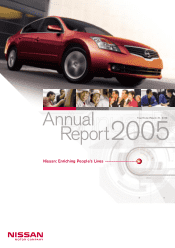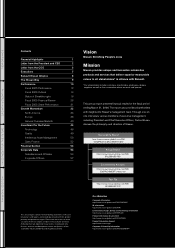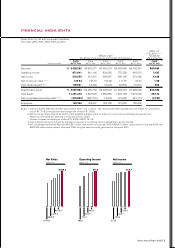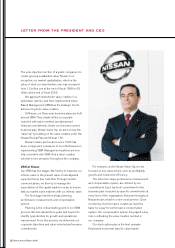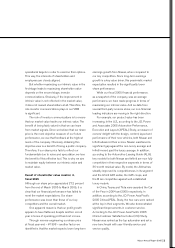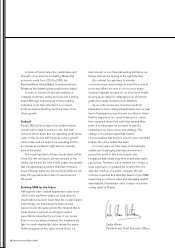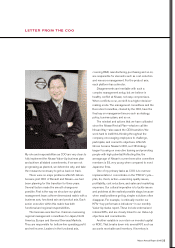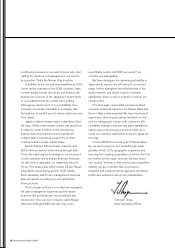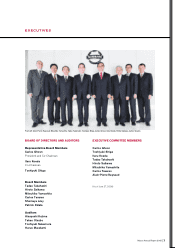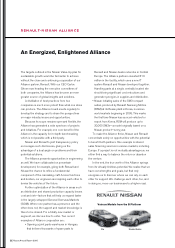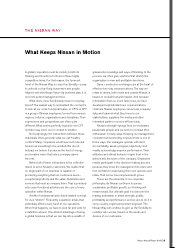Nissan 2006 Annual Report Download - page 4
Download and view the complete annual report
Please find page 4 of the 2006 Nissan annual report below. You can navigate through the pages in the report by either clicking on the pages listed below, or by using the keyword search tool below to find specific information within the annual report.
Nissan Annual Report 2005
2
LETTER FROM THE PRESIDENT AND CEO
The sole objective function of a public company is to
create growing sustainable value. Nissan is no
exception; our market capitalization, which is the
value of what our shareholders own, has increased
from 1.2 trillion yen at the end of fiscal 1999 to 6.3
trillion at the end of fiscal 2005.
We approach shareholder value creation in a
systematic manner, and have implemented Value-
Based Management (VBM) as the strategic tool to
achieve long-term value creation.
At Nissan, our three-year business plans are built
around VBM. They clearly define a corporate
objective with value-oriented operational and
financial commitments. Under our third and current
business plan, Nissan Value-Up, we aim to keep the
“value-up” by building on the value created under the
Nissan Revival Plan and Nissan 180.
Nissan’s share performance since 1999 has
been, in large part, a measure of our effectiveness in
implementing VBM. Management systems are now
fully consistent with VBM. And a value creation
mindset is now pervasive throughout the company.
VBM at Nissan
Our VBM has two stages. We first try to maximize our
intrinsic value or the present value of risk-adjusted,
expected future free cash flow. Through investor
communications, we then try to manage the
expectations of the capital market in order to ensure
that our market value matches with our intrinsic value.
The first stage has three steps, planning,
performance measurement, and compensation
system.
Planning is the critical starting point in our VBM
process. We look ahead three years and beyond to
identify opportunities for growth and operational
improvement. From this process, we determine our
corporate objectives and value-oriented performance
commitments.
For example, under Nissan Value-Up, we are
focused on key value drivers, such as profitability,
growth, and investment efficiency.
The other two steps, performance measurement
and compensation system, are defined by our
commitments. Each top-level commitment in the
business plan is backed by specific commitments at
every level of the organization. Everyone throughout
Nissan knows what he or she must achieve. Close
monitoring of performance creates an objective
basis for a pay-for-performance compensation
system. Our compensation system has played a key
role in cultivating the value creation mindset in
our company.
Our stock option plan is the best example.
Employees must meet specific value-based

